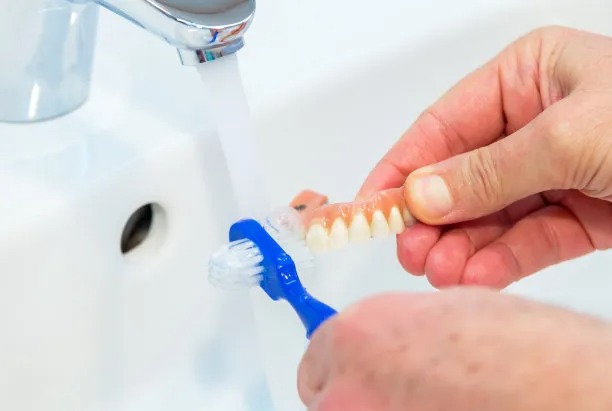Comprehensive Guide to Dental Implant Treatment for Enhanced Oral Health and Aesthetics in Modern Dentistry Practices
Summary: Dental implants have become a cornerstone of modern dentistry, providing not only functional restoration of teeth but also enhancing patient aesthetics and oral health. This comprehensive guide delves into the various aspects of dental implant treatment, ranging from the initial consultation and diagnostic procedures to the surgical process and post-operative care. Additionally, it highlights the advantages of choosing dental implants over traditional dentures and bridges. The insights provided will empower patients to make informed decisions that not only enhance their smile but also support long-term oral health and overall well-being.
1. Initial Consultation and Diagnostic Procedures

The first step in the dental implant process involves a thorough initial consultation. During this appointment, the dentist assesses the patient’s oral health, medical history, and specific needs. It is crucial to discuss any pre-existing conditions that may affect the procedure, such as diabetes or heart disease. A candid discussion helps in formulating a tailored treatment plan that fits the patient’s unique situation.
Diagnostic imaging plays a vital role in planning dental implant surgery. X-rays and 3D scans provide detailed views of the jawbone, enabling the dentist to determine bone density and structure. This information is essential for evaluating whether the patient has sufficient bone to support an implant or if augmentation procedures are necessary.
Alongside imaging, a comprehensive oral examination is conducted to identify any existing oral issues such as gum disease or cavities. Addressing these conditions before implant surgery is pivotal in ensuring a successful outcome. Thus, the initial consultation sets the foundation for a successful treatment journey.
2. The Surgical Process for Dental Implants
The surgical procedure for placing dental implants is typically broken down into multiple stages. Initially, the dentist will administer local anesthesia or sedation to ensure the patient’s comfort during the surgery. The first phase involves placing the titanium implant into the jawbone, acting as a root for the new tooth. This procedure usually takes 1 to 2 hours and is minimally invasive.
After the initial placement, a healing period follows, usually lasting between three to six months. During this time, osseointegration occurs, where the titanium implant fuses with the bone, providing a solid foundation for the prosthetic tooth. Regular check-ups are essential to monitor the healing process and ensure everything progresses as planned.
Once healing is complete, a second minor surgery may be performed to attach the abutment, which will hold the crown in place. This phase is crucial as it allows the dentist to evaluate the health of the surrounding gum tissue and ascertain that the foundation is stable before proceeding to the final restoration.
3. Benefits of Choosing Dental Implants
One of the primary benefits of dental implants is their natural appearance. Unlike dentures, which may shift and create an unnaturally full look, implants are designed to blend seamlessly with the patient’s existing teeth. They restore not only functionality but also the aesthetic integrity of one’s smile, leading to increased confidence.
Moreover, dental implants contribute significantly to improved oral health. Unlike traditional bridges, which can require alteration of adjacent teeth, implants do not disturb neighboring teeth, preserving their structure. Furthermore, implants stimulate the jawbone, preventing bone loss that can occur after tooth loss, contributing to overall oral health.
Patients also report higher satisfaction levels and a better quality of life after receiving dental implants. They allow for easier chewing and speaking compared to traditional dentures. This added comfort and functionality enable individuals to enjoy meals and socialize without fear of denture-related issues, fulfilling both practical and aesthetic needs.
4. Post-Operative Care and Maintenance
Post-operative care is crucial for the success of dental implants. Patients are advised to adhere to a specific oral hygiene regimen in the first week following surgery. This includes using a soft-bristle toothbrush, rinsing with saltwater, and avoiding hard or crunchy foods to ensure proper healing.
Regular dental check-ups following the placement of implants are important for monitoring their health and stability. Most dentists recommend scheduling follow-ups every six months, as these appointments allow for the identification of any potential issues early on, ensuring successful long-term outcomes.
Additionally, maintaining good oral health practices is vital. This means brushing, flossing, and avoiding habits such as smoking, which can impair healing and affect implant longevity. Educating patients on these practices enhances their commitment to long-term maintenance, solidifying the benefits of dental implants in their lives.
Summary:
Dental implant treatments represent a revolutionary approach in modern dentistry that significantly enhances oral health and aesthetics. From initial consultations to post-operative care, understanding each step empowers patients to make the right decisions. With the emphasis on improved function and appearance, dental implants reflect a commitment to patients’ well-being and quality of life.
This article is compiled by Vickong Dental and the content is for reference only.



